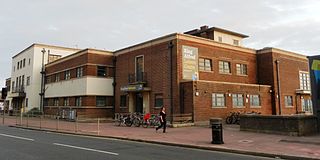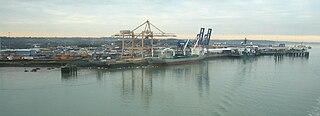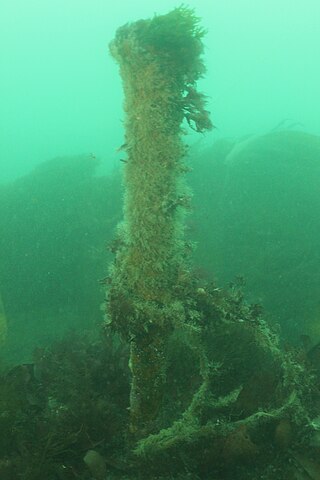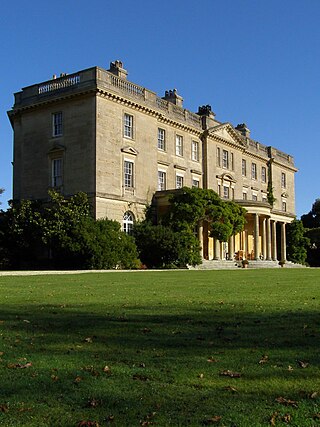
The Royal Naval Reserve (RNR) is one of the two volunteer reserve forces of the Royal Navy in the United Kingdom. Together with the Royal Marines Reserve, they form the Maritime Reserve. The present RNR was formed by merging the original Royal Naval Reserve, created in 1859, and the Royal Naval Volunteer Reserve (RNVR), created in 1903. The Royal Naval Reserve has seen action in World War I, World War II, the Iraq War, and War in Afghanistan.
The Royal Naval Reserve are a part of the Royal Navy of the United Kingdom.

HNoMY Norge is the Royal Yacht of the King of Norway. One of only three remaining Royal Yachts in Europe, the ship's name Norge is Norwegian Bokmål for Norway. The Royal Yacht Norge was the Norwegian people's gift to King Haakon VII in 1947. The yacht is owned by the King but maintained and crewed by the Royal Norwegian Navy. Originally built in 1937 in the United Kingdom for Thomas Sopwith, she served in the Royal Navy as an armed yacht during the Second World War.
Sir (Albert) Noel Campbell Macklin was an innovative British car maker and boat designer. He founded Eric-Campbell in 1919, Silver Hawk in 1920, Invicta in 1925 and Railton in 1933. In 1939 he founded Fairmile Marine and supplied boats to the Royal Navy throughout World War II, for which effort he was honoured with a knighthood.

The King Alfred Leisure Centre, owned by Brighton and Hove City Council and operated by Freedom Leisure, is the largest wet and dry sport centre in the city of Brighton and Hove and is situated on Hove sea front.

HMS Badger was a shore establishment of the Royal Navy on the east coast of the United Kingdom. She was commissioned on 13 September 1939 was the flagship of the headquarters of the Flag Officer in Charge (FOIC), Harwich who was responsible to Commander-in-Chief, The Nore, and was decommissioned on 21 October 1946, although the Operations Room remained as the Emergency Port Control for the Harwich area. The site was Parkeston Quay, now Harwich International Port, and the bunker lies under Hamilton House, currently an occupational health centre, close to the entrance to Harwich International Port, a few miles west of Harwich.

Glen Strathallan was a British ship originally built as a trawler, but then converted into a private yacht, which also served in the Royal Navy in World War II. She was finally scuttled in 1970 at Plymouth Sound, England as a diver training site.

HMS Royal Arthur was a shore establishment of the Royal Navy, initially at Ingoldmells near Skegness, and later at Corsham, Wiltshire. During the Second World War, the former holiday camp at Ingoldmells was used to mainly train 'Hostilities Only' communications branch ratings and officers.
One ship and two shore establishments of the Royal Navy have borne the name HMS King Alfred, after Alfred the Great:

The Royal East African Navy was a unified naval force of the former British colonies of Kenya, Tanganyika, Uganda, and Zanzibar. It was the colonial forerunner of the Kenyan Navy and Tanzanian Navy. Formed in 1953, it was disbanded on 30 June 1962.

Edward Preston "Teddy" Young, & Bar, was a British graphic designer, submariner and publisher. In 1935, he joined the then new publishers Penguin Books and was responsible for designing the cover scheme used by Penguin for many years as well as drawing the original penguin logo. During World War II he served in the Royal Naval Volunteer Reserve (RNVR) and became the first British RNVR officer to command a submarine. After the war he returned to the publishing world and eventually became managing director of the Rainbird Group. Having written his wartime biography, One of Our Submarines, in 1952, he later wrote several other books.

Exbury House is an English country house in Exbury and Lepe, Hampshire, situated on the edge of the New Forest.

Adrian John Liddell Hart (1922–1991) was a British soldier, Royal Navy officer, Liberal politician, author and adventurer. He served briefly in the French Foreign Legion and portrayed it in the 1953 book Strange Company.

717 Naval Air Squadron was a Naval Air Squadron of the Royal Navy's Fleet Air Arm. It formed as a Torpedo Bomber Reconnaissance Training Squadron, at RNAS Fearn, in July 1944, operating with Barracuda aircraft. The squadron then moved to RNAS Rattray, in the October, continuing in Torpedo Bomber Reconnaissance training. In early 1946 the squadron received Firebrand aircraft, with the objective of forming a Firebrand Conversion Unit, however the squadron disbanded in March 1946.
734 Naval Air Squadron was a Naval Air Squadron of the Royal Navy's Fleet Air Arm. It was active between 1944 and 1946, formed as a naval Engine Handling Unit. Initially operating out of RNAS Worthy Down, it subsequently relocated to RNAS Peplow, where it eventually disbanded.
746 Naval Air Squadron was a Naval Air Squadron of the Royal Navy's Fleet Air Arm. It was active from 1942 through to 1946, formed as a Night Fighter Interception Unit at RNAS Lee-on-Solent. It operated out of various Royal Navy and Royal Air Force air bases, along with some deployments on Royal Navy escort aircraft carriers.

758 Naval Air Squadron was a Naval Air Squadron of the Royal Navy's Fleet Air Arm. It was initially formed as a Telegraphist Air Gunner Training Squadron, from 1939 and 1941, renumbered from 759 Naval Air Squadron, operating out of RNAS Eastleigh. It moved to RNAS Arbroath, in 1940, disbanding there the following year. The squadron reformed at RNAS Donibristle, in 1942, as a Beam Approach School. Moving to RNAS Hinstock, it was known as the Naval Advanced Instrument Flying School. It provided instrument courses, utilising a large number of Oxford aircraft, with detachments sent to the specialised flying schools at RNAS Crail, RNAS East Haven, RNAS Fearn and RNAS Yeovilton. X and Y Rover Flights supplemented the detachments, Z Flight was on calibration work and evolving homing and landing capabilities, with the squadron disbanding in 1946, at RNAS Peplow, into 780 Naval Air Squadron.

765 Naval Air Squadron was a Naval Air Squadron of the Royal Navy's Fleet Air Arm. It formed at RNAS Lee-on-Solent, in May 1939, as a Seaplane School and Pool squadron. The squadron moved to RNAS Sandbanks, in August 1940, where it undertook the Seaplane Flying Training Course Part I. Lieutenant Commander Wilson was appointed as dual officer in charge of the air base, and Commanding officer of 765 NAS. By the middle of 1943, dedicated Seaplane Training schools ended and the squadron disbanded in the October. 765 NAS reformed at RNAS Charlton Horethorne, in early February 1944, as a Travelling Recording Unit. The squadron moved to RNAS Lee-on-Solent in March, before moving to RNAS Worthy Down on one month later during April, then in May it moved to RNAS Stretton, were it remained during June.
The Upper Yardman Scheme had its origin in 1912, when Admiral Prince Louis of Battenberg, the then First Sea Lord, initiated a scheme to allow Royal Navy ratings the chance to gain a commission at a relatively young age and so enable them to compete for promotion to the highest ranks. Until 1931 it was known as the Mate Scheme because successful candidates were promoted to the rank of mate, but that title was very much disliked and from 1932 onwards the scheme became known as the Upper Yardman Scheme, those successful being promoted to the rank of sub-lieutenant.













